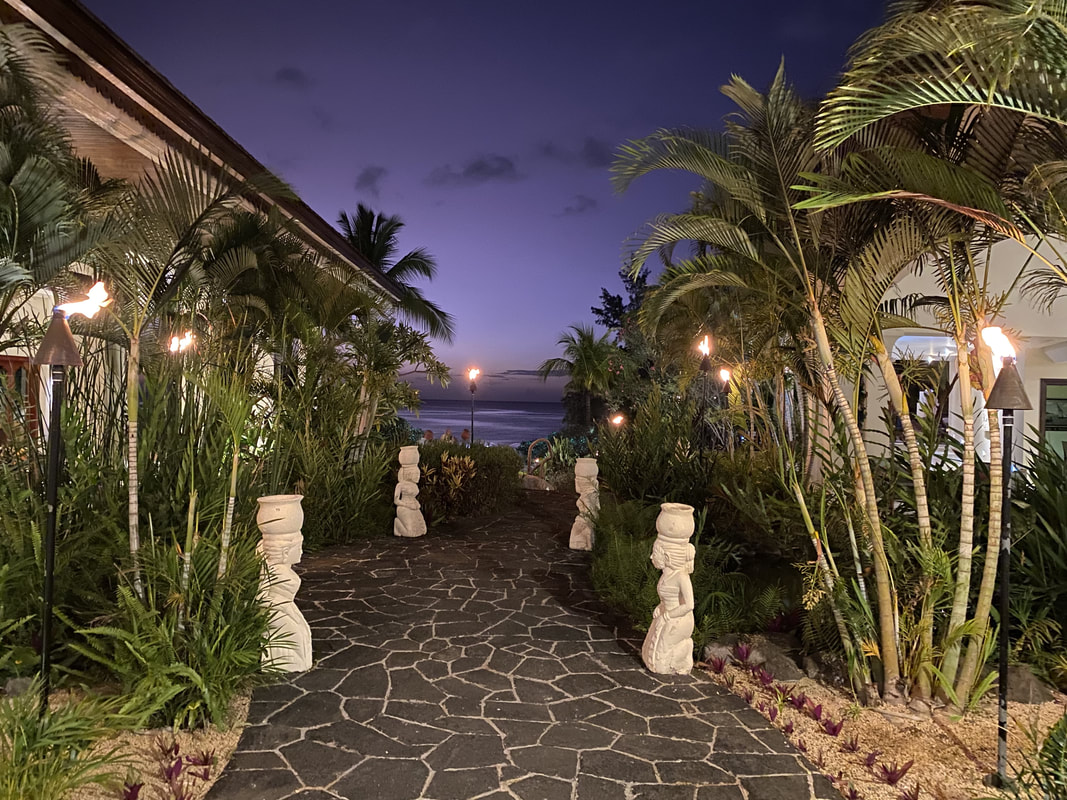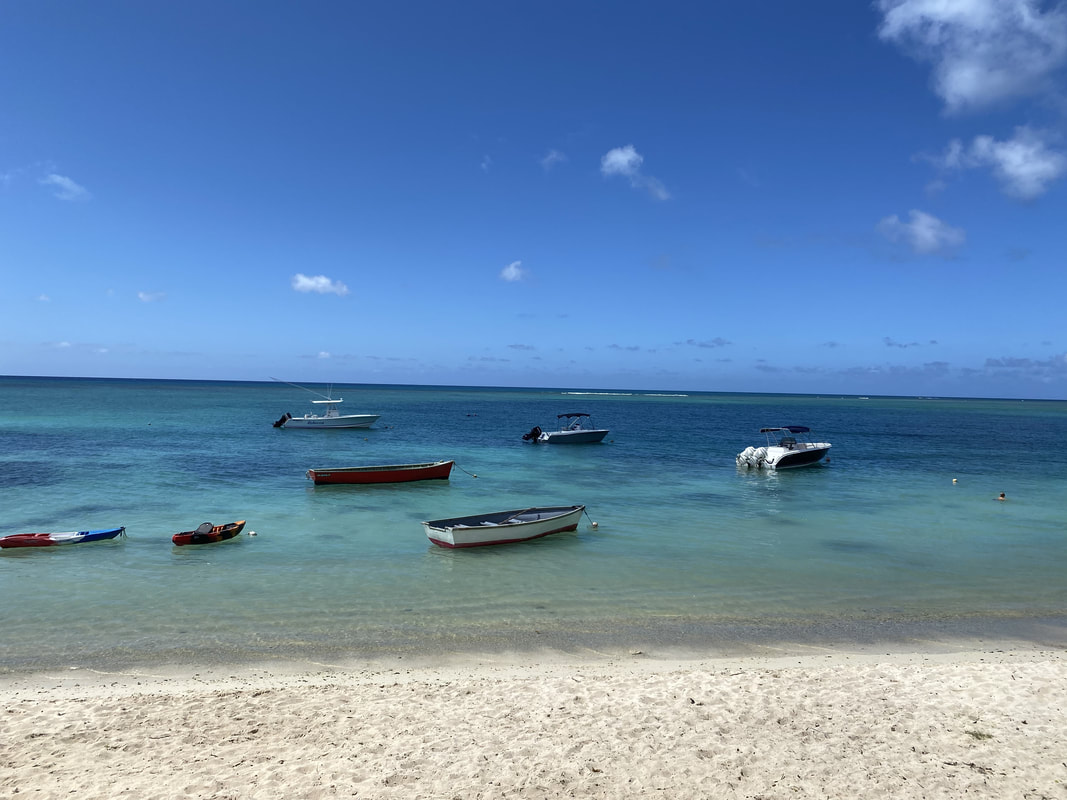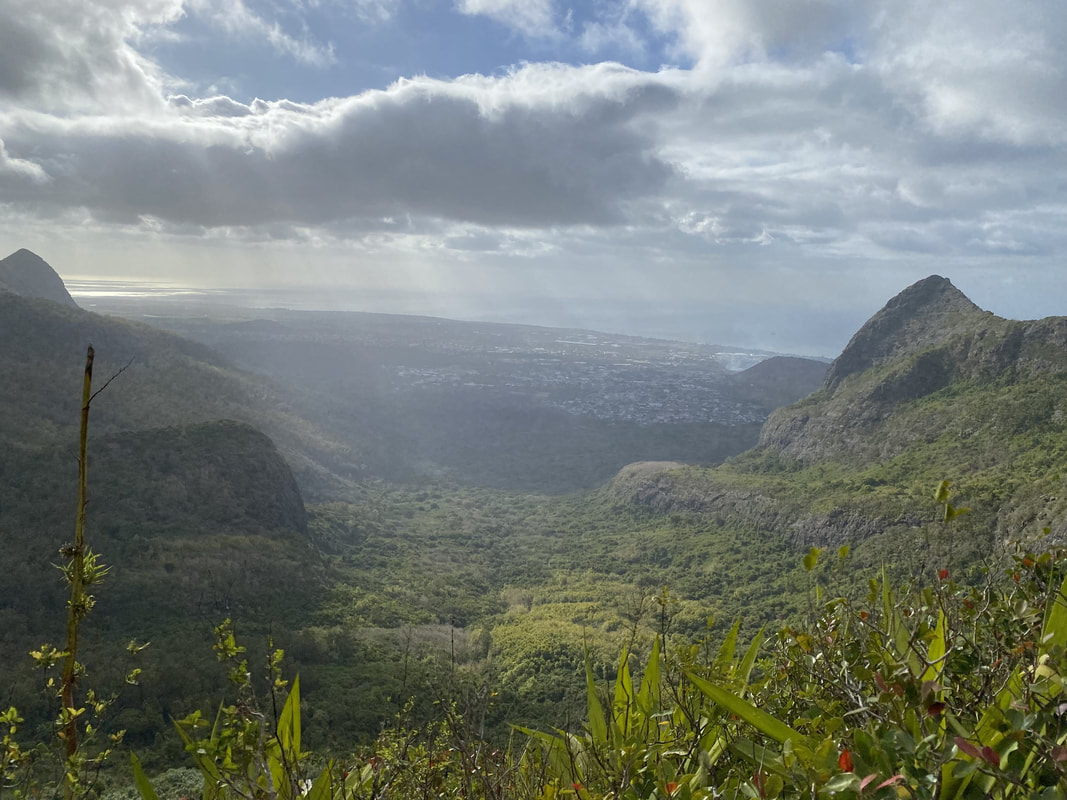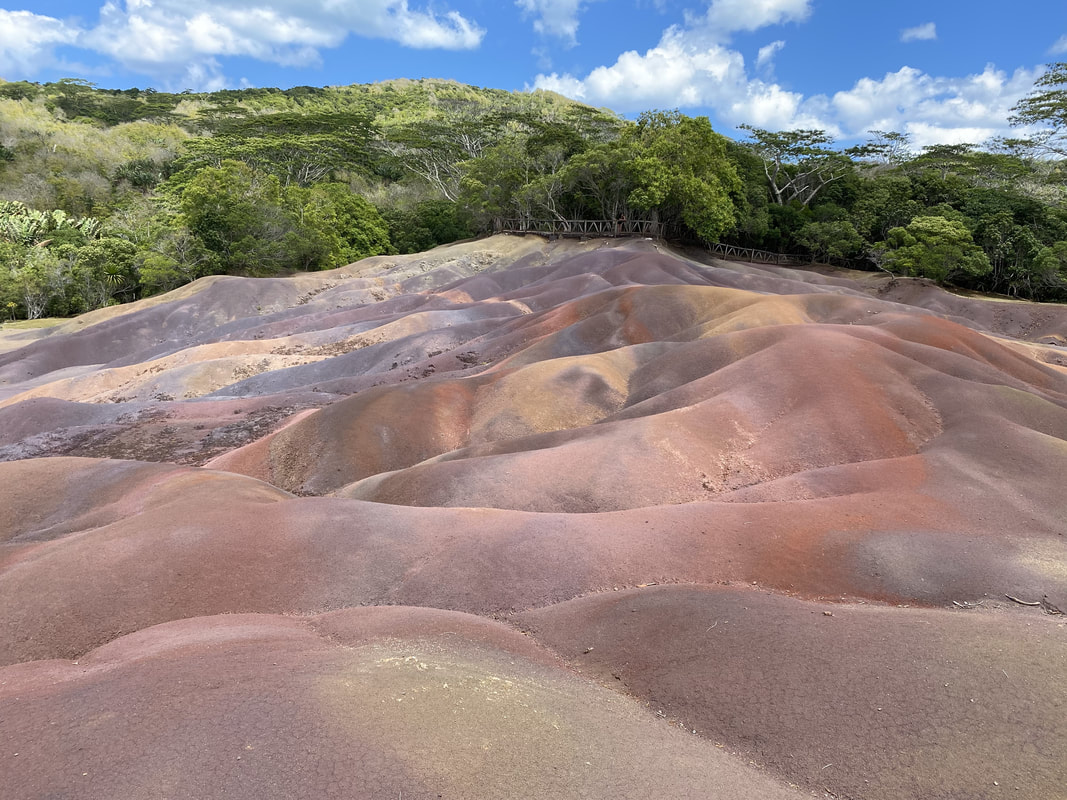SummaryAirport Rating ***** Reception of locals ***** Cost: ££££
Unexpected tripsMauritius is a country that I've always wanted to visit, I just figured it would happen when I was married with a family. But sometimes, life brings you some incredible diversions, and that's what happened for me to end up in this island paradise. It still feels surreal. Long-time readers know my background of growing up under the UK poverty line, so to say a "diversion" is a trip to Mauritius is as surreal and strange to me as it might be for you reading those words. Yet, here I am. I've read and seen a lot about Mauritius over the years. The pristine beaches, turquoise waters, palm trees, and the beautiful landscape. Growing up I was fascinated about the land of the dodo and with all sincerity I am grateful and appreciative to the primal timeless all-pervading for giving me opportunities to write about places like this. So, did it live up to my expectations? Island to metropolisFirst, a little about Mauritius. It's more than just an island paradise, it's a country of over a million people with a complicated history and a unique place in the world today. It's part of the broader Mascarene Islands, and the territory governed by Mauritius spans several islands, as well as one of the world's largest exclusive economic zones along its coast. There's some controversy in terms of when Mauritius entered into recorded human history, but the general consensus is that the Arabs came across it in the 10th century, recorded it in maps but didn't set up any settlements. It re-enters recorded history in the 16th century when the Portuguese arrive, give it a name (Ilha do Cisne), introduce some random monkeys from south-east Asia, but also don't do much with it. It's not until the end of the 16th century, with the arrival of the Dutch, that settlement on the island begins to happen on any scale. Most of the early settlers were from East Africa and Madagascar. I say settlers. They were slaves, bought by the Dutch to work on tobacco and sugar plantations. It was also the Dutch that gave the island its present-day name, after one of their dukes. Their experiment here lasted about a century but was eventually abandoned for two reasons - first it wasn't economically viable, and second those monkey the Portuguese bought in? They were going on a rampage destroying everything. That brings us to the early 18th century and the arrival of the French. They renamed the island Isle de France and succeeded in establishing a permanent settlement. They expanded the institution of slavery which massively expanded the population of the island, bringing many more slaves from mainland Africa - especially from areas that form modern day Mozambique and Zanzibar, as well as the first indentured labourers from the sub-continent that was under French rule at the time. They established the French language and French law over the islands and for the next century things didn't change too much. But no story about colonisation would be complete without the British, and they inevitably got involved at the beginning of the 19th century, capturing the islands during the Napoleonic Wars. They reverted the name back to Mauritius but agreed to give the French language and laws certain protections. They got rid of slavery but increased the pace of immigration from the sub-continent by bringing in more and more indentured labourers, while keeping the island economy focused on exporting only raw materials. Mauritius gained its independence in 1968 and began shifting from a plantation economy to other areas, primarily tourism and financial services, rapidly improving living standards and is now classified as a high-income economy. It's not all sunshine and rainbows. The country is currently in a large debt crisis, and its mix of demographics has led to frequent and deadly communal clashes. The mix of different empires has meant the largest part of the population has its origins in India - it's the only country in Africa where Hindus make up the majority. Christians - largely descended from east Africa make up about a third of the population, Muslims make up about a fifth of the population, and there are a decent number of Chinese descended individuals too. First impressionsAs soon as I got out the plane I was hit by a wave of heat and humidity which lasted for the week and a half that I was out there (other than one day which was a washout). The airport is small but gave no issues either landing or departing, and there are taxis waiting outside ready to transport travellers to their hotels all over the island. Leaving the airport, you're pretty much immediately introduced to the stunning landscapes and gorgeous backdrops that makes Mauritius famous the world over. At times it feels like you are in Panjab, but every time I got a glimpse of the ocean, I quickly remembered I was on an island paradise. There are cities - the largest is Port Louis, while I spent a lot of time in nearby Ebene. These are functional cities and probably not the main reason most people visit the country, but the thriving business districts of both cities (Ebene is pretty much entirely based around work) were a reminder that this is more than just a country of beaches. The traffic is intense, and although there is some public transport including a new metro in the capital city, you pretty much need to have access to a car (like a taxi) to get around the island. At times the place feels like India. The flag of India is plastered everywhere, and most companies have Indian names, while Hindu mandirs are dotted along most roads. It's a bit of surreal experience knowing you are in a country that is classified as a part of Africa, but which looks almost completely like India. BeachesLet's start with the obvious. Beaches. I stayed in Flic en Flac, a tourist hub on the western coast of the island. The village has a vibrant day and nightlife with numerous bars and restaurants in the main town, and the largest beach on the island. Some of the largest hotels are located on the edge of the beach, including mine. Some of the hotels here are just incredible. They have pretty much everything within their complexes as there aren't shops just around the corner you can just walk and visit. But it also means you are stuck in a metaphorical walled garden where the hotel is able to charge extortionate amounts for simple things - and they do. A trip to Mauritius isn't cheap. Flic en Flac beach is one of the most popular, longest, and beautiful beaches in Mauritius. The beach is known for its crystal-clear waters and white sandy beaches. You can see the different colours between the salty ocean water, and the clearer water from lakes that flows into the sea. And the sand is beautiful. While there are a few small areas of rock, the soft sand extends for miles. I took a one-hour roundtrip walk barefoot without ever seeing the end of the beach. The water is perfect for swimming and the beach is surrounded by many palm trees and other tropical vegetation. The beach offers a relaxed atmosphere and is not too crowded, making it perfect for those who want to enjoy a peaceful day by the sea. I tried a bit of sailing (I got an hour free with the hotel) and it was a great experience. Coming from the most landlocked part of the UK, sailing isn't really an activity I thought I'd ever do, but it was fun. A friend of mine I met on the island took me to Pereybere beach, which is a beautiful beach located on the northern coast of Mauritius. It is known for its clear blue waters, white sandy beaches and palm trees. The beach is a popular spot for swimming, sunbathing, and water sports such as snorkeling, windsurfing, and kitesurfing. One of the main attractions of Pereybere beach is the deep coloured waters, and it's absolutely jaw dropping. The colour here is completely different to Flic en Flac, a deep turquoise makes the whole beach look picture perfect. The beach is surrounded by coral reefs, which are home to a wide variety of marine life, including colourful fish and other sea creatures. This is exactly the type of beach I think of when I think of an island paradise. It felt a little more crowded than Flic en Flac, but I can also understand why. MountainsMauritius is relatively new, geologically speaking, created by volcanic activity about 8 million years ago. This activity created an incredible landscape of large hills and mountains, vast expanses of green, golden yellow sandy beaches, and beautiful turquoise waters. Last year I tore two ligaments in my ankle playing football, and they don't heal quickly. That being said I really wanted to climb a mountain to get a view of the island so I was advised to give Le Pouce a go - named after a strange thumb shaped protrusion that makes up the summit. While it is the third highest mountain on the island, much of the climb is relatively straight forward. Le Pouce is a mountain located in the Moka Range of Mauritius, and it's a popular mountain for hiking - although when I visited in the late afternoon it was completely empty. The mountain is 812 meters high and offers a great workout as well as a panoramic view of the island. The hike to the summit usually takes a couple of hours and is considered as a moderate to challenging level of difficulty, mainly due to .that weird thumb-like summit. The trail to the summit is well marked, and it starts with a steep ascent through dense tropical forest. As you climb higher, the vegetation becomes less dense and the views of the surrounding landscape become more spectacular. Every time I turned a corner I'd want to take a photo, only to be greeted by a more photogenic spot a few minuets later. The final stretch of the hike is a steep climb over rocky terrain, which can be challenging but also offers great views of the island. I'd learned my lesson from Peru and had a little bit of grip on my shoes which was helpful. While the rest of the hike was relatively straight forward, the last bit is almost vertical and requires a bit more effort and the use of your arms. I won't lie, my legs turned to jelly at one point, but I pushed through and made it to the top. The summit of Le Pouce offers a panoramic view of the island, including views of Port Louis, the capital of Mauritius, as well as the coastline. The view from the summit is a great reward for the hard work of climbing the mountain and once my jelly legs had gone, I spent about 10-15 minutes just admiring the views. I really wanted to climb Le Morne Brabant, a mountain located in the southwest of Mauritius, known for its historical, cultural and natural importance, but my ankle ligaments got pretty sore for the following week and so I didn't risk doing further damage. The mountain is 556 meters high and it is considered a UNESCO World Heritage Site since 2008. The mountain is known for its association with the history of slavery and the abolition of slavery in the island. The mountain is linked to the story of runaway slaves who sought refuge in the mountain and formed a community known as "Maroons". They used the mountain as a natural fortress and a symbol of resistance against slavery. When slavery ended, people went to mountain to let the slaves know, but misinterpreting the arrival of these people and fearing persecution the former slaves all jumped to their deaths. rather than risk capture. ChamarelChamarel Geopark is a geological and natural site located in the southwest of Mauritius. It is known for its unique geological features and spectacular natural beauty. The park is home to a variety of landscapes, including waterfalls, volcanic rock formations, and lush vegetation and located in the village of Chamarel. No matter where you are staying, it's a bit of a trek to get to chamarel and taxis are not cheap. But unless you've hired your own car, it's pretty much the only way of visiting the key landmarks of the area. One of the main attractions of the park is the Seven Coloured Earths, a unique geological formation made up of sand dunes of seven different colours. The colours are a result of the erosion of volcanic rocks, and the different shades are caused by the presence of different minerals reflecting in the sunlight and erosion from rain. The sand appears in various shades of red, brown, purple, blue, green, yellow, and purple. I visited early one morning, before the place got too busy and I felt lucky to be there while it was relatively empty. The seven coloured earths isn't a large area, in fact, you can walk around it in about a minute and it is fenced off to stop people trampling over it. While the colours are spectacular, I had expected a wider expanse of land. Nearby there is a conservation project for giant tortoises, and I spent a few minutes watching these magnificent creatures walking around their enclosure. Another popular attraction in the park is the Chamarel Waterfall, a 100-meter-high waterfall that offers a spectacular view and a refreshing swim. The waterfall is surrounded by lush vegetation and a variety of bird species, making it a great spot for birdwatching. The waterfall is approximately 83 meters high and is one of the tallest in the country. The waterfall is situated in the Black River Gorges National Park, and is formed by the Rivière du Rempart, which runs through the park and is fed by several smaller streams. While you can take a comfortable hike to view the waterfalls, I watched it from viewing platforms which gave a fantastic panoramic view of the waterfall and the surrounded thick green vegetation. GurdwaraThere is one Gurdwara in Mauritius, Gurdwara Singh Sabha, located on the outskirts of the capital city Port Louis. I visited on a Sunday morning and found a beautiful Gurdwara that was busy with sangat (congregation). While there aren't many Sikhs in Mauritius (I'm told a couple of hundred families) the Gurdwara is a decent size with a small dome on the top in a style completely different to common Sikh architecture we might be used to in England or Panjab. Inside the Gurdwara is broadly split into two large areas, a langar hall which takes up about three quarters of the space, and a darbar hall that takes up a quarter of the space - all on the same floor which is a relatively unique layout. On this Sunday, I'd say that maybe three-quarters of the sangat were Sikhs, with the remaining largely Hindus. While all paid respect to Guru Granth Sahib, the langar fall was packed with what seemed like international students getting their free meal of the day. It is always nice to see the concept of langar remaining such a key part of serving the community around the world in the modern day and hopefully making a big difference in the lives of those who most need it. The Gurdwara was devoid of many pictures you might commonly see in Gurdwaras especially those relating to Sikh history and sacrifice, which might be a function of being in a Hindu majority country where discussing the recent genocide of Sikhs might be problematic. That being said, watching the two communities with such a long-shared history coming together is always nice. Would I recommend visiting Mauritius?I got lucky, and I remain thankful for this trip. Visiting Mauritius isn't cheap and for some it's an opportunity that might not present itself. To those reading this but unable to visit, I hope I did this beautiful country some justice. To those who are thinking about visiting, it makes sense if you're travelling with family (although that makes things more expensive). Outside of the resorts and beaches, there are probably a handful of things to do, and these can easily be done within a week - but these things are spectacular so it's worth taking the time to hike the mountains, visit the geopark and explore different parts of the island. I've never been a beach person, so for me the main attraction isn't something I'm overly bothered about. I felt completely at ease travelling as a Sikh. The people I met were very friendly, with good stories. The connection to the sub-continent felt surreal at times, but it was quite nice. Indic culture permeates Panjabi culture and so that sense of familiarity was very nice. Comments are closed.
|
AuthorBritish Sikh, born in the Midlands, based in London, travelling the world seeing new cultures. Categories
All
|










 RSS Feed
RSS Feed